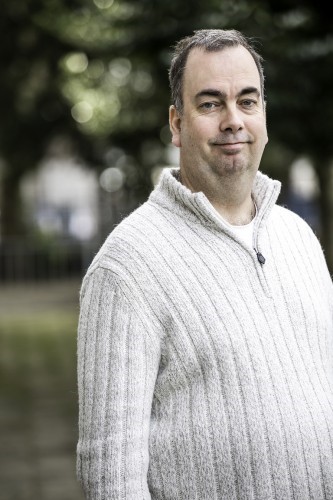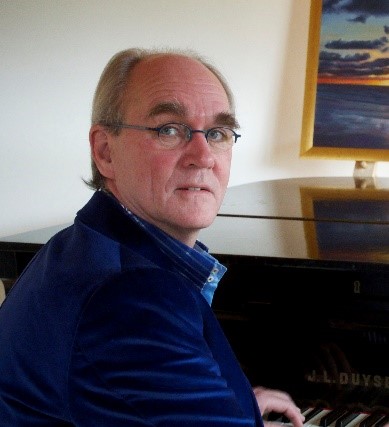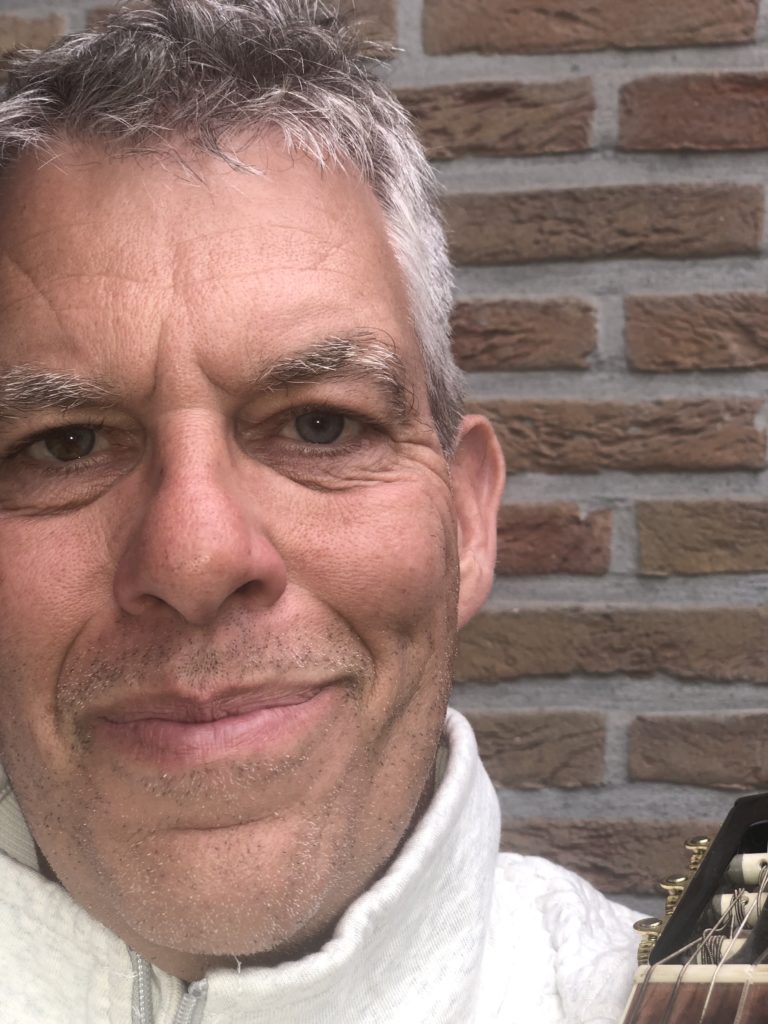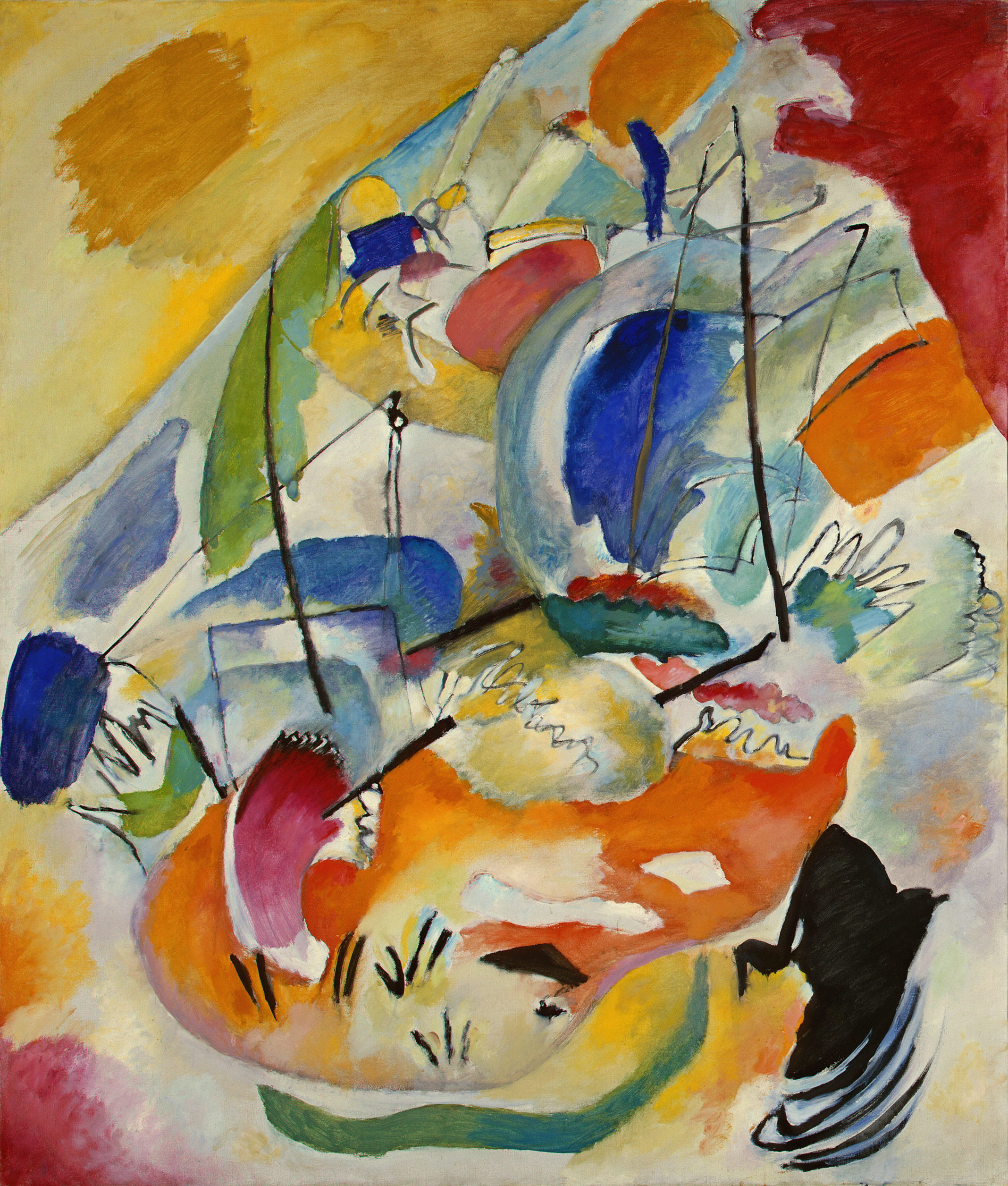”A vivid representation of the martial theme of the composition and Kandinsky’s ideas regarding synesthesia.”

When visiting the National Gallery of Art in Washington DC in 1991, Rob Severijns for the first time watched the painting “Sea Battle”. It made an impression.
Created in 1911 by the Russian artist Wassily Kandinsky, and also known under the title “Improvisation nr.31”, it is a masterpiece that can be seen as a landmark in the transition period between the figurative art of the impressionists and the abstract art of the avant-gardists. This work is mostly abstract, although several figurative elements can be distinguished, such as the masts and the sails of the vessels.
In 1911, Kandinsky was in the middle of developing his own vision on the art of painting, finding ways to abstract from reality. He was interested in music, as in this form of art the composer needs to use abstraction almost by definition to express himself.
Kandinsky found his musical inspiration especially in the Austrian composer Arnold Schönberg, who experimented with music that expresses inner feelings in a “natural” way, without having to adhere to conventions such as musical keys.

It is said that Kandinsky had synaesthesia, that he could hear sounds when watching colours. He has written several publications in which he relates the two; every colour represents a spiritual mood, which in turn is connected to a specific instrument in an orchestra. In this way, you could hear (or see) a musical composition in a painting. To be more precise: if you want a painting to be as spiritual and expressive as a piece of music, then you must create an abstract painting, where the colours and the shapes together form the notes and the chords.
A reproduction of “Sea Battle” hangs on the wall in the studio of Rob Severijns since 1991, always with a thought “in the back of his mind” to do something with the painting in the light of the above. Simply said: to create a piece of music that “fits” the painting.
Hugo Fredrix and Rob Severijns work together in music for several years now, and by accident their conversation hit the topic “Sea Battle”. They decided to work together on creating the piece of music envisioned. Rob Severijns wrote the text which connects the colours on the painting with the underlying expressions on the one side, and the instruments attributed to these colours by Kandinsky on the other side. Hugo Fredrix composed the music in which the instruments find their place, building up to the climax of the Sea Battle and returning to an anti-climax once the battle is over. Several times the music follows the atonal music theory as developed by Schönberg.
Together they asked Ewout van Roon, renowned video artist in the Netherlands, to create a video interpretation to accompany the music for listeners that do not have direct access to the painting in Washington. The result is just over 6 minutes of music and video that directly relates to the painting. Colors, forms, notes and chords should be experienced simultaneously.
The Video
For an optimal experience we recommend to click on “Watch on Youtube” and to select the FullScreen modus. Set the audio loud enough to experience a true sea battle!

The video has been screened at the Film by the Sea film festival in Vlissingen, in 2020. This festival attracts over 50,000 visitors each year. Vlissingen is the home town of Michiel de Ruyter, the admiral who has been involved in many sea battles against England in the seventeenth century, which formed an important source of inspiration for Kandinsky when creating the painting. For more information click here.

In August 2020, the video has been screened as part of the Short Shot Fest Film Festival in the alma mater of Kandinsky: Moscow. Venue is the art – center “Efir” in the heart of Moscow. For more information click here.
About the Creators

Hugo Fredrix (1970) studied music technology at the HKU in Utrecht, the Netherlands. He also studied at the Royal Conservatory in Maastricht where he is currently employed as teacher in music technology. Already during his studies Hugo worked as a conductor, soloist and composer. He is playing keys in various pop and jazz ensembles. In his own studio he writes, records and produces music which varies from soundtracks for movies to folk songs in the Dutch language. He is a renowned player of organs in the Southern part of the Netherlands

Ewout van Roon (1952) is video artist, whose biggest sources of inspiration are in nature and people. He aims at creating beauty and beautiful images and sounds. After decades of filming, painting, writing and making music, he currently focuses completely on making video art. In recent years he has made both video works that stand as a work of art in themselves, and bundled video work that forms a backdrop for concerts. In 2016 and 2017, various exhibitions followed in the Netherlands, but also abroad in Kutna Hora, the Czech Republic, Bremen and Venice. Recently, he created the video concert “The Sound of Water” with organist Gijs van Schoonhoven and the Universe Suite video concert with Czech guitarist and composer David Wurczel. More information can be found at ewoutvanroon.nl

Rob Severijns (1966) is text writer. He studied guitar and vocals at the music school of Anna Konings, and together they have brought several songs to life. He has written many songs for other vocalists, and publishes own work on a regular basis, including his CD “50” which was released to commemorate his fiftieth birthday in 2016. With Hugo Fredrix he has produced amongst others the title song of his solo performance “the Jubilee”. See also robseverijns.nl

